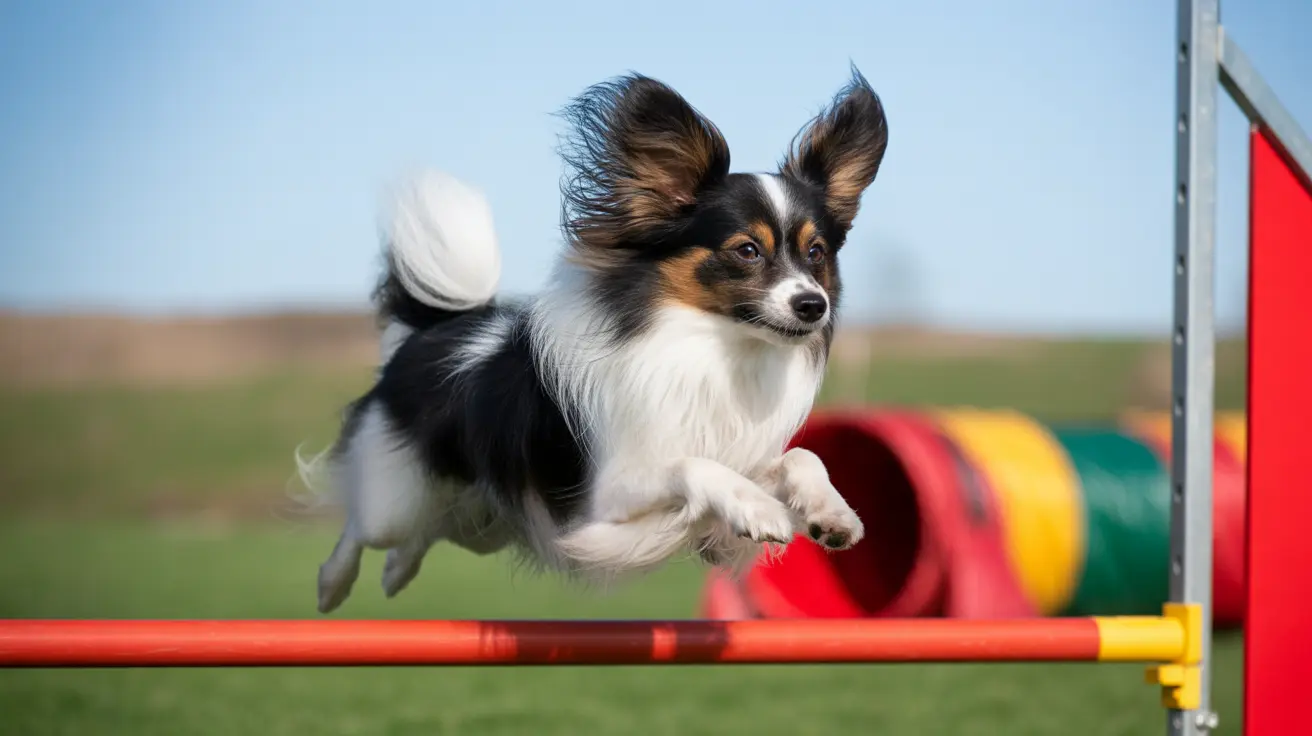Looking to learn about the charming world of Papillon mix dogs? These delightful hybrid breeds combine the Papillon's signature butterfly ears and intelligence with diverse traits from other beloved dog breeds, creating unique and lovable companions.
Whether you're considering adding a Papillon mix to your family or simply curious about these enchanting crossbreeds, this comprehensive guide will explore their varieties, characteristics, and what makes them special companions.
Popular Papillon Mix Breeds
Small and Companion Mixes
The Chion (Papillon-Chihuahua mix) and Papitese (Papillon-Maltese mix) are among the most sought-after small Papillon crosses. These compact companions typically weigh between 5-15 pounds and inherit the affectionate nature of both parent breeds, making them ideal for apartment living.
Active and Sporty Mixes
The Austi-Pap (Papillon-Australian Shepherd mix) and Collpapillon (Papillon-Border Collie mix) represent the more energetic spectrum of Papillon crosses. These intelligent and athletic dogs excel in agility sports and require dedicated exercise routines.
Physical Characteristics
Papillon mixes showcase diverse physical traits depending on their other parent breed. Most retain the distinctive butterfly-like ears that made the Papillon famous, though the degree of expression varies. Sizes range dramatically from tiny 5-pound lapdogs to medium-sized 60-pound companions.
Coat types and colors show remarkable variety, including:
- Smooth to long-haired textures
- Solid, bi-colored, or multi-colored patterns
- Common colors: white, black, brown, cream, and various combinations
Temperament and Personality
Most Papillon mixes inherit high intelligence and an eagerness to please, making them excellent candidates for training. They typically display:
- Strong bonds with family members
- Alert and watchful nature
- Adaptability to different living situations
- Social and friendly dispositions
Exercise and Training Requirements
While exercise needs vary by mix, most Papillon crosses benefit from:
- Daily walks (30-60 minutes)
- Interactive play sessions
- Mental stimulation through training
- Agility or obstacle courses for more active mixes
Health and Care Considerations
Papillon mixes generally enjoy good health and longevity, often living 12-16 years. Regular veterinary check-ups, proper dental care, and maintaining a healthy weight are essential for their well-being. Some may inherit health concerns from either parent breed, making health screening important when adopting.
Grooming Needs
Grooming requirements depend largely on the mix's coat type. Most require:
- Weekly brushing sessions
- Regular dental care
- Nail trimming every 2-4 weeks
- Professional grooming every 6-8 weeks for longer-coated varieties
Frequently Asked Questions
What are the most popular Papillon mix breeds and their typical sizes?
The most popular Papillon mixes include the Chion (5-15 pounds), Papipoo (8-16 pounds), and Bostillon (5-25 pounds). Sizes vary significantly based on the other parent breed, with some mixes reaching up to 60 pounds.
How much grooming do Papillon mixes generally require, and how do coat types vary?
Grooming needs vary by coat type. Short-coated mixes need weekly brushing, while long-coated varieties require more frequent grooming and occasional professional maintenance. Coat types range from smooth to long and fluffy, depending on the mix.
What kind of exercise and training needs do Papillon mixed breeds have?
Most Papillon mixes need 30-60 minutes of daily exercise and regular mental stimulation. They excel in training due to their intelligence and eagerness to please, making them great candidates for various dog sports and activities.
Are Papillon mixes good family dogs and how do they typically behave around children?
Yes, most Papillon mixes make excellent family dogs when properly socialized. They're typically gentle, patient, and playful with children, though supervision is always recommended with very young kids.
What health issues should owners be aware of when adopting a Papillon mix?
Common health concerns include patellar luxation, dental issues, and potential heart conditions. Regular veterinary check-ups, proper dental care, and maintaining a healthy weight can help prevent or manage these issues.
Conclusion
Papillon mixes offer wonderful combinations of traits that can suit various lifestyles and preferences. Whether you're seeking a tiny companion or an active partner for dog sports, there's likely a Papillon mix that matches your needs. Remember to consider the characteristics of both parent breeds when choosing your perfect furry friend.






